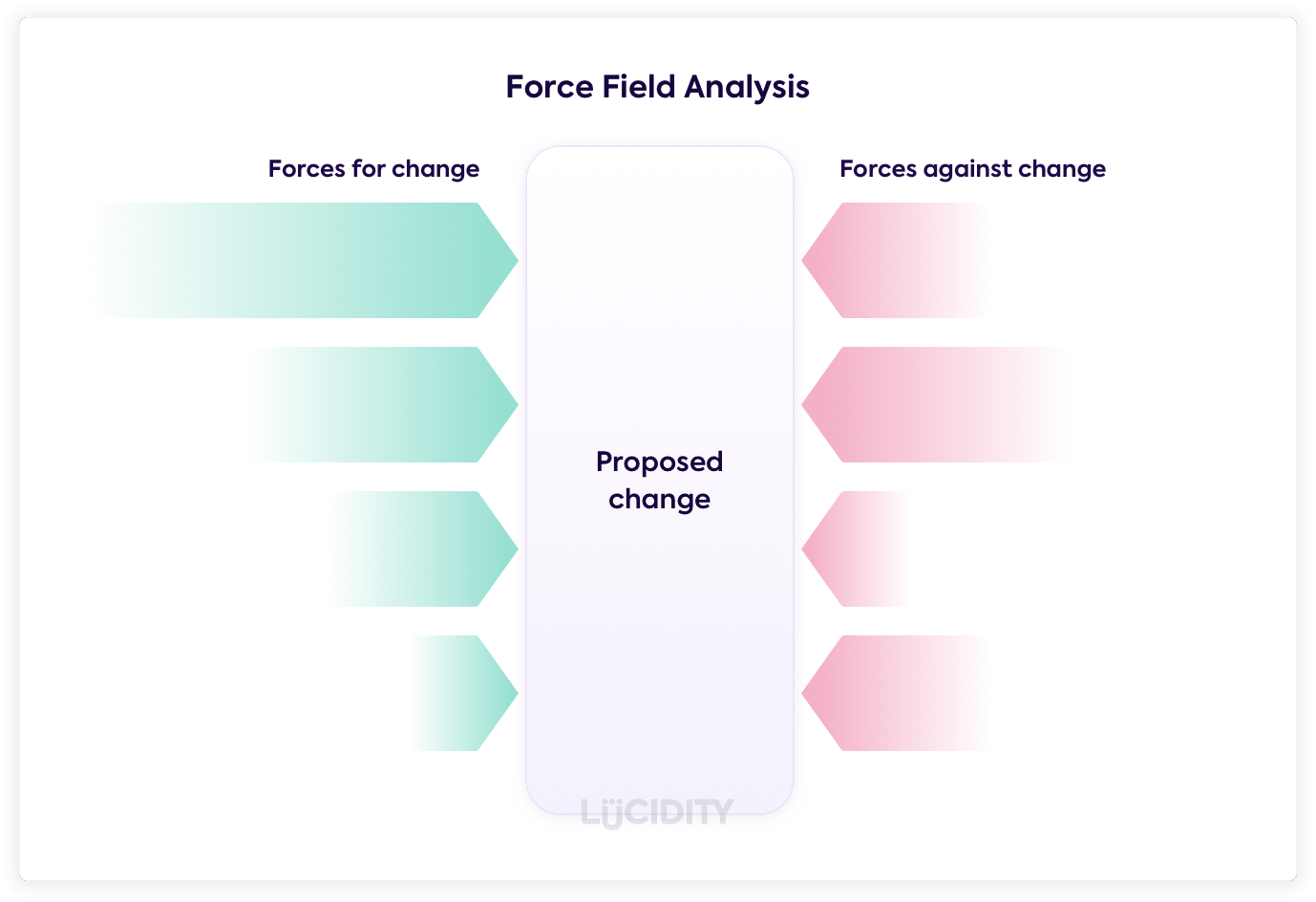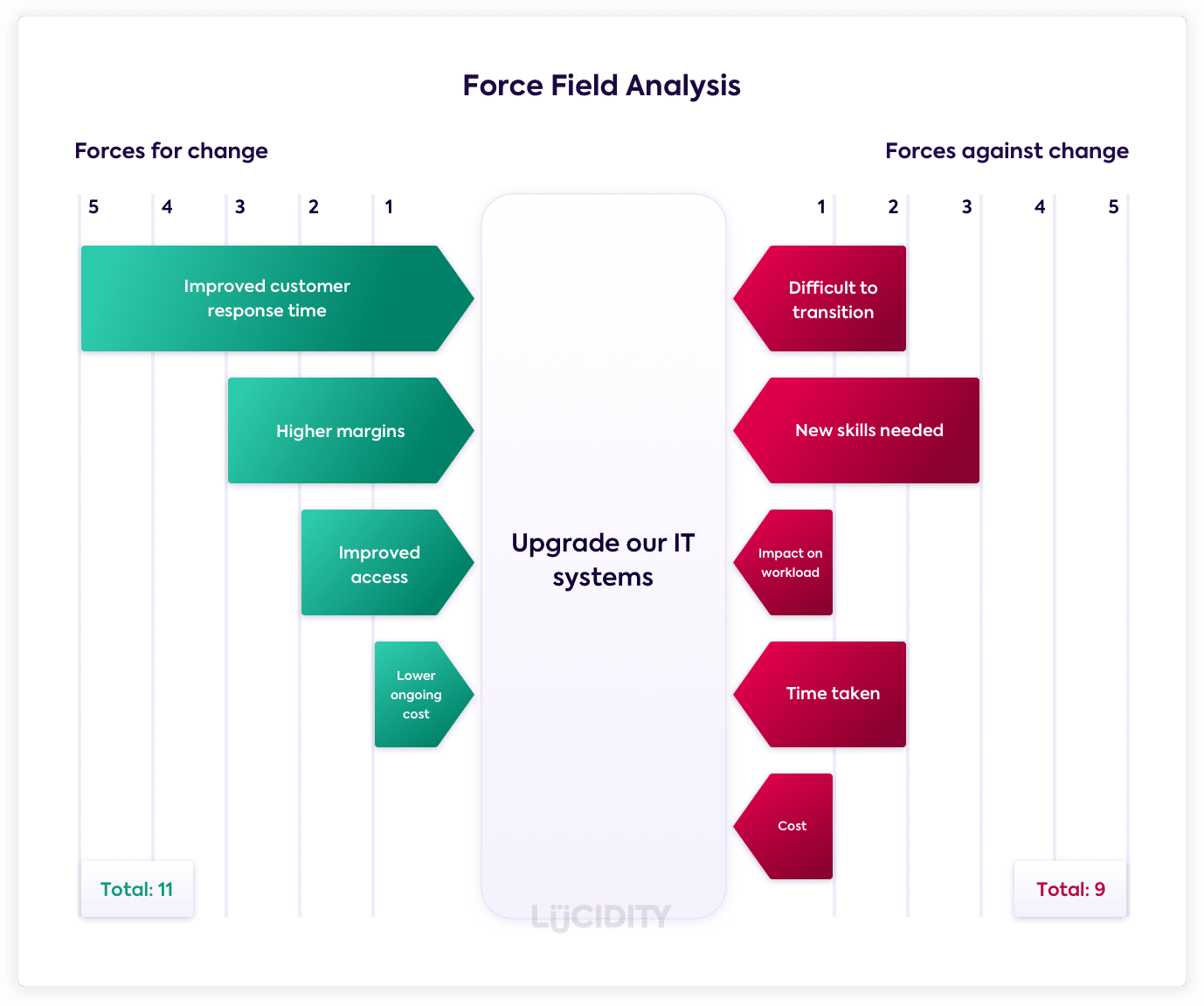

Shields up! This is a framework to aid strategic decision making. It’s a useful tool to help you map out a decision process and weigh up the reasons for and against, in order to decide the right path for your company.
The Force Field Analysis is a framework used to aid business decisions, often in the context of strategic planning, implementation or change management. The framework assumes there are forces in favour of the decision and forces against the decision.

If you want the decision to be made or the change to happen, the forces against that change must be weaker than the forces making that change.
The forces that can impact a business decision might include:
Each force is given a value of 1 – 4, the larger the value the higher the impact is on the business and thus more weight for or against the decision. It’s easier to look at an example, let’s say a business is reviewing a new IT system. It’s a big decision, so what would the pros and cons look like…?

In the above simplistic example, the decision should be to do the IT change, as the total forces for the decision add up to 11, whereas against it would be a 9.
Real life examples of Force Field Analysis will likely be produced in much more depth, in order to really analyse the impact a decision will have on the company.
Advantages of the Force Field Analysis include:
There are some limitations of the model including:
You should prepare by gathering as much information as possible about the decision, the context you’re making it within, and the areas it will impact. FFA is often done best by consulting with other parts of the business and your peers, in order to produce a comprehensive list of forces.
There are a range of decision making tools and frameworks that can be used to complement or replace the FFA, such as Cost/Benefit Matrix or Scenario Analysis.
Force Field Analysis was created by Kurt Lewin in 1951.
FFA can be used for strategic decision making, but it’s unlikely to be effective in the day to day tasks. It can add too much time and become an unhealthy decision by democracy. In short – a useful tool, but one to use only where appropriate.